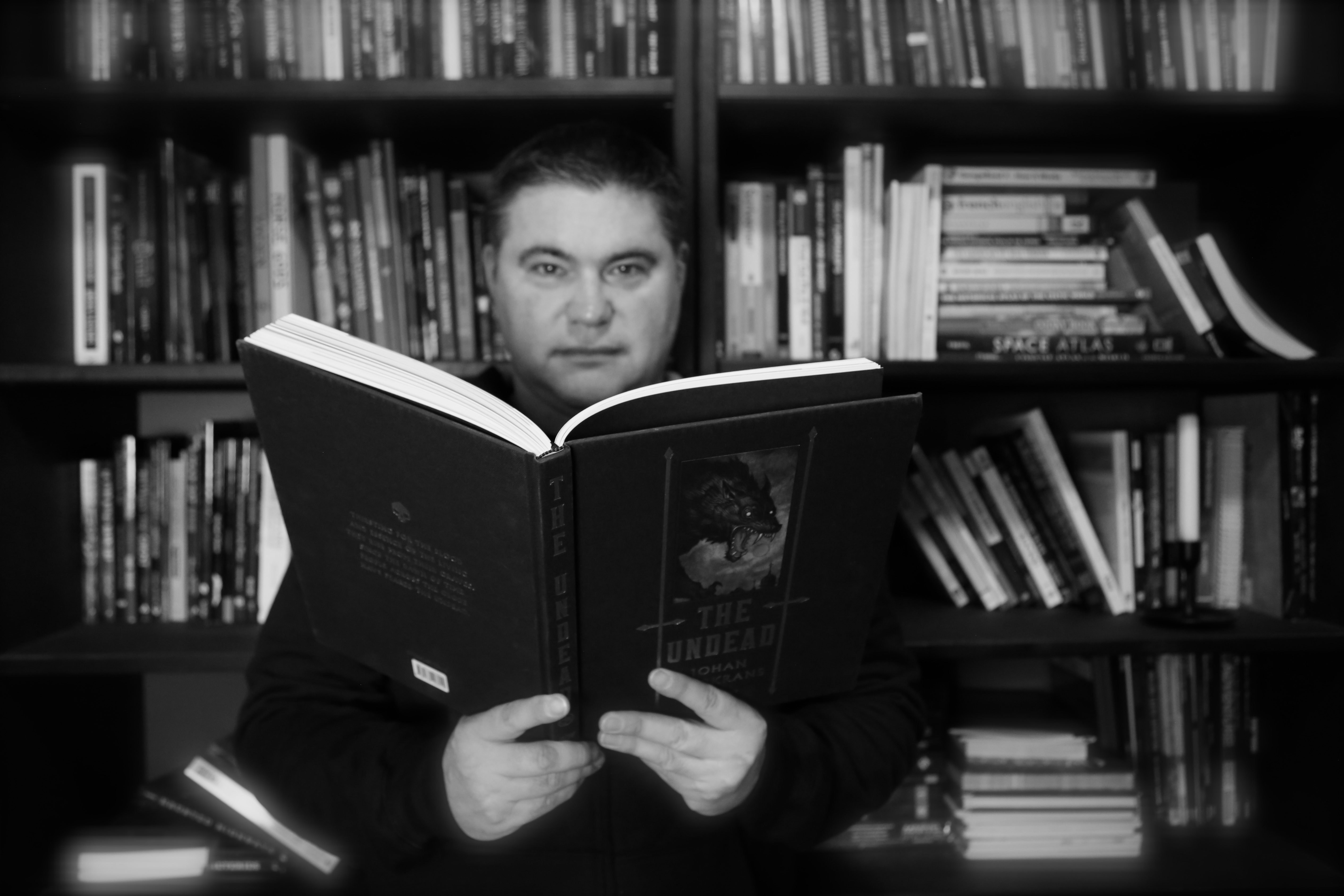
How To Research Ghostly Suspects For Your Cozy Ghost Hunt
In this article, find ways to create a profile of a suspected ghost, where to get that information, and how to apply it to help identify the spirit.
It All Starts With A Lead
First off, leads start you down your research journey. They come from many sources like rumors, ghost stories, news, friends, family, and more. It’s a nugget of info that makes you think there could be a ghost haunting a person, place, or thing. Then, it’s on you to see if that’s true.
I like to use journalistic methods to flesh out the lead. That means you want to answer these basic questions (and it’s ok if you don’t have all of them answered right now).
- Who reported the haunting OR Who could be the ghost?
- What happens when the ghost manifests?
- When does the ghost manifest?
- Where does the ghost manifest OR Where is the haunted location?
- Why does this ghost manifest (this one you’ll have to learn more about)?
- How does the ghost interact with people (another one you’ll need to learn about)?
Try to include as much information when you write these out. Not everything will be true. Urban legends, gossip, stories, and rumors are acceptable at this point. You’ll throw out the junk as you do more research.
Finding Ghostly Suspects For The Case
Types of Records Needed
You can find a lot out about people (living or dead) through online resources. Before you go down the Internet research rabbit hole, think about the records and archives you need to fill in information gaps. Here are the records I look for:
- Property ownership
- Property taxes
- Census and vital records
- News stories
- Obituaries
- Birth certificates
- Death certificates
- Divorce records
- Military records
- School records
- Police records
- Autopsy reports (if available)
These records will help you find a list of people with a strong connection to a haunted place. You’ll be able to tell if a suspected ghost lived or died at the haunt and get ideas for why it remains in death.
List of Sites Used
Once you know the records to identify suspects, you can use these sites to confirm that list. I use these sites most often. This isn’t an exhaustive list and local online records and archives can vary. If you need a good all-in-one site, you can’t go wrong with Ancestry.com (not an endorsement). I don’t think there’s another site with as much access to records at a decent price.
- Real estate sites like Zillow.com (to find previous owners)
- Census.gov
- Newspapers.com
- Newspaperarchives.com
- Department of Health sites (i.e., doh.wa.gov if you live in Washington)
- USA.gov for military records after WWI (https://www.usa.gov/military-records)
- Archives.gov for military records before WWI
- For school records, you will likely need to search for them by state, county, city, or district (i.e., “find school records in Seattle, Washington”)
- StateRecords.org or state-run criminal history archives (https://www.wsp.wa.gov/crime/criminal-history/ in Washington)
- Autopsy reports must be requested through a police agency or medical examiner’s site in each district
As you can tell, it makes life easier to use a source like Ancestry.com to get many of these records. If you need to get information from government agencies, you may need to fill out a Freedom of Information Act request.
Narrowing Down Ghostly Suspects
Now that you have a list of people associated with the haunt, you can start to rule people out. There are 2 reasons why somebody haunts a place:
- Someone died in the haunted location
- Someone has a strong emotional connection to the haunted place
You can eliminate anyone still alive from your list. They’re obviously not the ghost. With the remaining people, try to find the specific anchor (or attachment to the haunt) in their records. A murder or medical cause of death would attach someone to the scene. As for the strong emotional attachment, it could be that a former tenant or owner loved the house. Long-term residents may want to stick around in death. There’s also a possibility that someone simply loved the place … even if they lived there for a short time. It may have been the only joy they had. That’s why you need many records to give you context about the suspected ghost’s life.
You can find the deaths by using a newspaper archive. Search for keywords like “died,” “death,” “killed,” and/or “murdered” with the city name and date range.
Spectral Networking Pays Off
You can make your research much easier by asking a librarian or archivist for help. That’s their job. Don’t feel bad about asking for grim information. They’ve heard every information request before. If you’re looking for information about an orphanage fire that killed 12 kids in 1933, they can find it and reserve it for you.
Not every file or document is available in digital format. Librarians and archivists will get the physical files. It may take some time to get together, so send your requests in a couple of weeks before you want to view them. They can also help make copies, but there’s likely a fee. You can also use your phone to take pics. I have a handheld scanner to take higher-resolution copies.
Initial Interviews With Witnesses
Witnesses are another prime source to help identify who that ghost was in life. Their experiences can help fine-tune your suspect list. When you speak to a witness, ask open-ended questions. These provide better clues than simple ‘Yes/No’ type questions.
Here are some examples to get you started:
- What does the ghost look like (if it’s an apparition)?
- How does the ghost manifest?
- Where does the ghost appear?
- Who does the ghost seem to target?
- What objects or possessions does it move?
- Describe the ghostly interactions you experience.
- When did you (the witness) move in?
- What changes have you made to the property?
If you can understand ghostly patterns (or habits), it can help you identify ghosts. Habits and behaviors are hard to give up, even in death.
Building The Phantom Profile
By now, you should have a lot of information about suspected ghosts. It’s time to make a profile, so you can investigate for specific goals and objectives.
First, prioritize the people that died at the haunted location. They are the most likely to haunt it. Write down their physical descriptions, their habits like smoking, their favorite activities or possessions in the locations, and, their favorite room.
Second, map the witness reports to the suspects. If there’s an apparition, assign it to the best physical description. Assign the smell of cigar smoke or perfume to a suspect. If objects move, note the room and type and object. Go through all the reported activity and try to map it to a suspect. If it doesn’t match, then add it to an unknown suspect.
At this point, you can do the same exercise for people that didn’t die at the haunt but lived there for a long time.
Third, start planning your questions to ask to verify the ghost’s identity during your ghost hunt. Write questions from your research and witness reports. When you get EVPs, they should match the biographical details in your research.
Setting Goals and Objectives
It’s time to set your goals and objectives for your ghost hunt. Goals and objectives sound interchangeable, but they are different.
A goal is the end result you want to achieve. For example, my goal is to verify George Wragg is the ghost that haunts the Spokane Pioneer Museum’s First Settlers exhibit.
An objective is what you’ll do to achieve your goal. For example, I’ll use EVP sessions and ask biographical questions to confirm George Wragg haunts the exhibit.
You want to have a couple of goals and many objectives for your ghost hunt. Think of this as having a hypothesis and many experiments to test it. You can always change your goals and objectives as new information comes in. That would be a twist. A twist makes you re-examine your research and data to set new goals. It happens to everyone, so don’t view a twist as a bad thing.
Special Thanks to Melissa Becker for showing me some great historical resources and sleuthing tips.
Discover more from Ghostly Activities
Subscribe to get the latest posts sent to your email.
